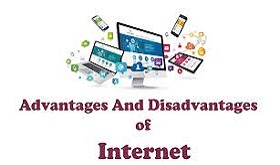Economic Inequality
What is inequality
Inequality can be seen according to alternate points of view, which are all related. Most normal measurement is Pay Inequality, which alludes to the degree to which pay is equitably conveyed inside a populace. Related ideas are lifetime Inequality (inequality in salaries for a person over their lifetime), Inequality of Riches (dispersion of abundance across families or people at a second in time), and Inequality of Chance (influence on pay of conditions over which people have no control, like family financial status, orientation, or ethnic foundation). These inequality ideas are connected and offer different yet reciprocal experiences into the causes and results of inequality, thus giving better direction to states while planning explicit strategies pointed toward tending to inequality.
How is Income Inequality estimated
Gini coefficient is a common proportion of pay inequality. The coefficient fluctuates somewhere in the range of 0 and 1, with 0 addressing wonderful equity and 1 amazing inequality. The majority of the examination is focused on the idea of pay inequality as caught by the Gini coefficient, which is accessible for an enormous number of nations and moderately extensive stretches. Except if determined in any case, Gini pay inequality alludes to discretionary cashflow or utilization and consequently as of now mirrors any reallocation through charges and moves.
What Causes Inequality
A scope of worldwide and homegrown variables — which might build up one another — have been proposed in the hypothesis and observational writing to represent the pay inequality patterns. The key powers incorporate the accompanying:
- Worldwide variables, like mechanical advancement, globalization, and item cost cycles, assume a significant part. For example, mechanical progression has added to the expertise premium, since people with advanced education enjoy a similar benefit in utilizing new innovations (Card and DiNardo, 2002). In Western Europe and the US, mechanical advancement has likewise converted into an emptying out of working class positions, a peculiarity known as occupation polarization (Goos and Monitoring, 2007).
- Country-explicit variables, for example, those connected with monetary turns of events and financial steadiness as well as to homegrown arrangements — including monetary combination, redistributive monetary strategies, and progression and liberation of work and item advertises — additionally assume a significant part in making sense of inequality patterns inside nations.
What are Consequences of Inequality
While some inequality is unavoidable in a market-based financial framework because of contrasts in ability, exertion, and karma, unreasonable inequality could disintegrate social attachment, lead to political polarization, and at last lower monetary development (Berg and Ostry, 2011; Rodrik 1999). Be that as it may, when is inequality extreme? There is no simple response, yet it will rely upon a few country-explicit variables, remembering the development setting for which inequality emerges, alongside cultural inclinations.
Fundamental Realities About Income Inequality
- Worldwide inequality has been declining quick since 1990s. During the nineteenth and a large portion of the 20th hundreds of years, worldwide inequality expanded emphatically, reflecting enlarging variations between nations’ per capita pay as cutting edge economies took off forcefully contrasted and the remainder of the world. The restoration in worldwide monetary participation in the center 20th century introduced a time of development and improvement. Consequently, per capita Gross domestic product development rates advanced quickly in less evolved nations, especially in Asia, bringing about union in pay levels across nations (Bourguignon, 2015). A huge number of families were lifted out of neediness. Subsequently, the worldwide pay inequality initially settled and afterward began to decline once again the most recent thirty years quickly. Nonetheless, it ought to be noticed that not all districts of the world experience pay combinations with additional created nations. In Sub-Saharan Africa, for example, pay development on normal was more humble than in Asia. A few additions in the decrease of worldwide inequality are probably going to be switched because of the Coronavirus emergency. It will probably decay worldwide inequality on the grounds that cutting-edge economies, as a general rule, have more assets to manage the aftermath from the pandemic and the resulting recuperation exertion.
Sources: Authentic series are from Van Zaden and others (2014), who expand on Bourgui-gnon and Morrisson (2002). Ongoing information is from Lakner and Milanovich (2013).
- Inside country inequality has ascended in many nations. While the advancement in the decrease of worldwide inequality throughout recent years has been wonderful, inside country imbalances have expanded, particularly in cutting edge economies. Throughout recent many years, the greater part of the nations and near 90% of cutting edge economies have seen an expansion in pay inequality, for certain nations keep an expansion in their Gini coefficients surpassing two focuses. Some of key elements behind the expansion in inside country pay inequality noted in the writing incorporate mechanical advancement, globalization, item value cycles, and homegrown monetary strategies, for example, redistributive financial arrangements, work and item market approaches.
- Rising social spending has been utilized to battle inequality. Monetary strategy is a key strategy instrument accessible to states to accomplish their distributional targets. In cutting edge economies, duties and moves decline pay inequality by 33%, with the vast majority of this being accomplished by means of public social spending, (for example, annuities and family benefits) (Immervoll and rel=”noopener noreferrer” others 2005; Paulus and others 2009). The degree of financial reallocation is much higher if the redistributive effect of in-kind spending rel=”noopener noreferrer, (for example, training rel=”noopener noreferrer” and wellbeing) is incorporated (Paulus, Sutherland, and Tsakloglou, 2009). Hence, it is critical to guarantee that social spending is satisfactory, successful and manageable. Moderate personal charges likewise play a significant redistributive capability in certain nations. The lower redistributive effect of monetary strategy in creating economies is likewise a vital variable behind their elevated degrees of inequality.
IMF and Pay Inequality
Inequality is at the middle phase of monetary strategy banter across the globe. A fair and evenhanded circulation of pay is an essential component of the common agreement. Macroeconomic strategies (counting government assessment and spending arrangements) essentially affect pay appropriation and that inequality can have unfriendly political and social consequences, with the possibility to subvert macroeconomic dependability and maintainable development.
Inequality is consequently, with nothing unexpected, a significant issue for the IMF in each of the three of its center exercises:
(1) loaning to help macroeconomic change programs;
(2) macroeconomic reconnaissance, including related approach investigation; and
(3) specialized help to fabricate limit, particularly on government tax collection and spending.
By and large, distributive issues have been a significant piece of the IMF’s discourse with part nations. Work on them has particularly escalated following the worldwide monetary emergency that started in 2008.
IMF work on pay inequality before the worldwide monetary emergency that started in 2008 was especially impacted by the experience acquired from IMF-upheld programs. Practically speaking, this experience prompted more prominent consideration regarding coordinating social wellbeing nets into change programs and shielding admittance to fundamental public administrations in wellbeing and training. Different drives, for example, the presentation of the Neediness Decrease and Development Office in 1999, carried development and destitution decrease targets to the focal point of program configuration in low-pay nations, as did the Vigorously Obligated Unfortunate Nations obligation alleviation drive. IMF-upheld programs were effective in raising social spending, remembering for correlation with comparable nations without programs.
The IMF has additionally developed its work on inequality issues in the years starting from the start of the worldwide monetary emergency. This work has enveloped a development of both crosscountry logical examinations and nation level evaluations of monetary combination and inequality, an assortment of financial strategy instruments to accomplish value objectives in an effective way, and the macroeconomic additions from reinforcing orientation value. A significant illustration is that with the right plan, government expense and spending arrangements can assist with accomplishing both more grounded development and more prominent correspondence of results and valuable open doors. For instance, supporting admittance to essential wellbeing and training administrations and lessening hindrances to female work market interest can assist with raising development and meet value goals. Indeed, even in the plan of financial combination, various choices can assist with lessening financial plan deficiencies without exasperating inequality. These incorporate measures to raise incomes from personal duties and focused on (as opposed to no matter how you look at it) decreases in friendly advantages. Measures that are really great for both value and proficiency — for instance, an expansion in incomes from repetitive property tax assessment — ought to likewise be major areas of strength for given while planning financial combination bundles.
The IMF will keep on fortifying its insightful work on pay appropriation issues. These endeavors will include further crosscountry investigation on various parts of macroeconomic approaches and what they mean for money dissemination. Work at the nation level on pay circulation issues will likewise be extended. The methodology will be specific, and it will be focused on nations where these issues are basic. The IMF expects significant collaborations between country-level and crosscountry examination, and the IMF will keep on attracting on the calling’s work these regions. In aggregate, the IMF will keep on extending comprehension of the nexus between pay appropriation and macroeconomics, determined to give applicable strategy counsel.
With the normal expansion in pay inequality because of the Coronavirus pandemic the IMF’s work on inequality issues is supposed to turn out to be much more extraordinary.

